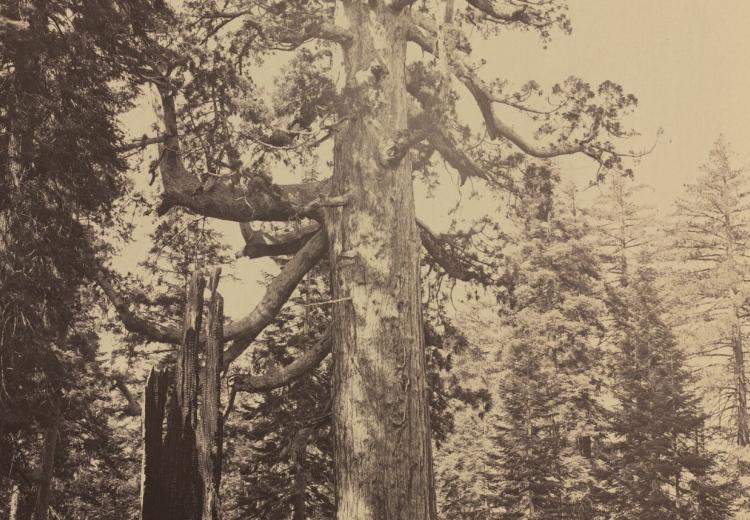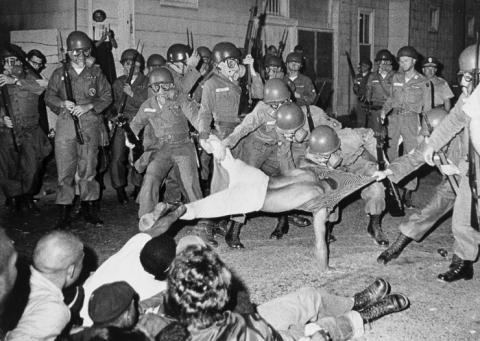What Does It Mean to Be American?

Carleton Watkins, Grizzly Giant, Mariposa Grove, 1861.
The story of America—its founding, its shaping, its mythology—is told in many ways. Their influence may not always be obvious, but artists and their works have played an essential, powerful role in telling some of these stories.
For example, did you know the U.S. national park system exists in part because of artists? Photographer Carleton Watkins’s mammoth photographs and intimate stereographs of Yosemite, including Grizzly Giant, Mariposa Grove (1861), convinced a senator to propose a new bill to the U.S. Congress reserving lands for public use. In 1864, President Lincoln signed legislation that set aside Yosemite and the Mariposa Grove as a state park for California—the first time that the federal government had ever created public parklands. A few years later in 1872, the world’s first national park, Yellowstone, was established, only a few months after artist Thomas Moran traveled to the area as part of an exploratory expedition. Moran’s breathtaking watercolor studies of the area, complemented by William Henry Jackson’s photographs, helped persuade Congress to designate Yellowstone as a park “for the benefit and enjoyment of the people.”
The impact of artists on the physical environment of America is just one story featured in the National Gallery of Art’s new Uncovering America resource, which looks at essential questions and explores the role of art and artists in thinking about the complex history of America:
- What does it mean to be American?
- What informs our individual and collective understandings of America?
- Why do works of art matter?
Resources are designed for K-12 educators and explore essential topics like immigration and activism, as well as time periods of historical interest, like the Civil War and the civil rights era. They shed light on moments that contribute to our understanding of what shaped America.
One such story is found in this arresting 1964 photograph by the artist Danny Lyon. Future congressman John Lewis befriended Lyon in the 1960s when they both were working with the Student Nonviolent Coordinating Committee (SNCC), an organization that aimed to desegregate the United States. Lewis described this picture in 2002:
“I think this picture depicts in a very clear and distinct way a country at war with itself—a country divided. There are two sides pulling at each other. But it also depicts a very powerful achievement: The young people involved did not engage in violence. Sometimes when you want to change things or make a statement or send a message, you have to simply get in the way.”
Lewis continued:
“We had discussions about the role of photography in SNCC, but it was only later that I really understood what we were trying to do. We had to find a way to help educate and sensitize people, especially non-Southerners. We were trying to put a face on the movement, to make it real, to make it very plain and simple to ordinary people. We wanted to say, ‘This is what is happening.’ Many people across the country saw all these unbelievable photographs in newspapers or magazines and were inspired by them. . . . They became a tool to educate, inspire, and enlighten the public.”
Exploring the question of what it means to be American can take many paths. Art plays a critical role in this arc of inquiry by serving as a primary source for historical investigation, a site for developing self-awareness and the taking of perspective, and a vehicle for civic participation.

